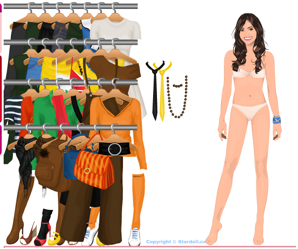
FRONT

BACK


The commutation test is a fun way to challenge our knowledge and feelings about a particular sign. It involves changing certain aspects of the signifier such as color and shape. Some paradigmatic transformations would involve substitution and transposition, while syntagmatic transformations would be in the form of addition or deletion. This test shows how changing something about the signifier can alter the signifieds that one initially associated with it. Examples of alterations would be “the use of a close-up rather than a mid-shot, a substitution in age, sex, class or ethnicity, substituting objects, a different caption for a photograph, etc.”(“Semiotics for Beginners: Paradigmatic Analysis”).
Here's an example:


What we obviously did here was switch the colors of the originally blue eagle and green archer. The blue eagle and the green archer are both staples of the Ateneo de Manila University and the De La Salle University respectively. Upon seeing these signs in another light, did your views change? What new signifieds did you think of when presented with the new versions? Comment and let us know!
Although the colors green and blue already have preconceived notions within the Filipino community as being associated with La Salle and Ateneo respectively, studies show that colors in general have respective emotions attached to them, as well as certain impressions that people get upon seeing a certain color.
Here are just a few examples:
Red- energy, strength, passion, eroticism, bravery
Pink- romance, love, femininity, sweet smelling
Orange- warmth, enthusiasm, tropics
Brown- earth, outdoors, inexpensive, dirt
Gold- wealth, winning, prestige, desire for power
Yellow- light, sun, joy, imagination, summer
Green- monetary success, growth, food, envy
Blue- communication, calmness, water, artistry, loyalty
Purple- psychic ability, royalty, mystery, fame
White- spirituality, innocence, cleanliness, sterility, positivity, faith (sorry, we couldn't really make it white or else it'd be invisible)
Silver- glamorous, high tech, industrial, astral energy, modernity
Black- sophistication, elegance, secretiveness, remorse, evil
Another example of a commutation test would be in the ever popular spoof t-shirts. Spoof t-shirts are able to change a couple of letters or words and totally change the meaning or impression one gets from seeing the shirt. The example that we chose is the ubiquitous I love NY shirt.

Next is a shirt that is almost exactly like the first, however it says I Love Manila more than NY.

Instead of proclaiming once more that we are puppets and constant admirers of anything American, this shirt now gives off the signified of Filipino pride and the destruction of colonialism.
The third shirt, again using the same design, now says I have never been to NY.

This shirt pokes fun at the popularity of the original I Love NY shirt and how almost everyone has one in their closet, even though some have never even been to New York. The shirt has become one of those "have to own one" pieces of clothing, that the meaning originally tied to it is often traded in for the sake of fashion.
The Meaning of Color in Web Design.Sibagraphics. 4 October 2008.
http://www.sibagraphics.com/colour.php
Semiotics for Beginners: Paradigmatic Analysis. Daniel Chandler. Prifysgol Aberystwth University. 4 October 2008.
All in all, we think that the Semiotic Theory is extremely important, especially to us Ateneo college students, because it is greatly in touch with the media, something that is very influential to us. It is our responsibility, therefore, to learn as much as we can about this theory and not be sucked in ignorantly. The theory gives so much power to the audience as interpreters and as responsible interpreters it is our duty to know the messages that we are receiving. We must not be like pigs led to slaughter without a say in what our destinies or fates will be. We must be critical yet practical and logical. The theory carefully explains the different ways we are able to perceive signs as well as the different levels of meaning. It also shows us how signs are really present everywhere and in every aspect of our lives. It is also important to note how much power the Semiotic Theory gives us in the interpretation of these signs and to the meaning that we give them. It is interesting how the meaning of a certain sign now was so different from its meaning a hundred years ago, and it is amazing to imagine what its meaning may be centuries from now. Though we think that overanalyzing and the variety of interpretations brought about by this theory can cause misunderstandings, ultimately we believe that it is a very important theory to learn about and it is as interesting as it is relatable.
Our Criticisms of the Theory
Upon extensively studying the Semiotic Theory, though we think it is extremely applicable to our daily lives, we do see some room for improvement. We cannot help but question the idea of too much over reading and over analyzing of a sign. The Semiotic Theory tells us that connotation, or the second level of meaning, calls for even more analysis of the literal or obvious meaning of the sign. However, once we do move on to this level, we tend to believe that the new meaning that we perceive is correct.This is the common problem within romantic relationships. If a girl receives a text from a guy that she likes and he does not put any smileys in it, she will start to over think and ask herself if he really likes her. This feeling will only arise because she thinks he may be mad or nonchalant due to the absence of smileys in his text. There is always the possibility of the guy not being used to putting smileys in his texts, or maybe he simply forgot. The girl may then choose to stop texting him because she thinks he is not interested in her.
Another is the fact that the Semiotics Theory gives no authority to any one person. It is as if each interpreter has the power to say how he/she perceives the sign and that answer will always be the correct one for that particular person. This is where many misunderstandings arise that lead to even bigger scandals. Take the recent Ateneo Bonfire for example. The culmination of the entire event is always the ceremonial bonfire, however this year, someone decided to paint the names of the La Salle players onto wooden planks that were included in the fire. For some Ateneans, this was just a fun way to end the basketball season and to celebrate the victory. Many, however, thought that this prank was taking it too far. Some La Salle supporters even went far enough to say that Ateneo is now a cult. Another example would be with the interpretation of the Nazi swastika sign. The Nazis saw the swastika as a symbol of them being the supreme race. Firmly associated with the Nazis and Adolf Hitler, the common idea associated with the swastika is that of hatred and genocide. However, many ignorant people are seen nowadays with swastika patches on their jackets, book bags, or notebooks. They use or wear it simply as a fashion statement as these patches are seen on many articles of clothing in urban outfit stalls and have no ties to white supremacist groups or Nazism whatsoever. If Jewish people were to see them however, it would cause a chaotic uproar. An example would be the scandal caused by Prince Harry when he infamously wore a swastika arm band to a costume party and was highly criticized by the media.

Thus we believe that though the Semiotic Theory is a relatively easy theory to follow and understand, its credibility is in question because of the immense amount of power and authority given to the audience as interpreters. We each have our own ideas and opinions and with so many different angles of perception, values, social, and cultural systems in the world today, this theory risks having many misunderstandings as a result. Also, because some people may over analyze and over interpret, we begin to question if communication is really possible. Does the message successfully get from the sender to the receiver if the receiver is free to interpret and over analyze the message as he/she pleases? Won't the message then be tainted by the interpretations of the receiver, which then results in the receiver not being able to receive the original message.
Sources:
http://bokertov.typepad.com/btb/images/prince_harry_swastika.jpg
Critical Semiotics. Scott Simpkins. CSI: Sim2. 1 October 2008.
http://www.chass.utoronto.ca/epc/srb/cyber/sim2.html
Myths
Roland Barthes defines myths as the dominant ideologies of our time. They are naturalized as common and shared among all of the members of the society, making them accepted as normal.
The practice of emphasizing on myths in the Philippine advertising industry is now known to be widespread.
An Atenean, or anyone in our society for that matter, would often encounter the myth: “If you have fair skin, you are beautiful.” That is an underlying myth in one of our country’s best-selling products.

The (print and tv) ad for Silka Papaya whitening lotion, as endorsed by Iya Villania, is a clear exemplification of this particular myth.
Whether or not buyers of this product consider weighing out the information to see if the papaya extracts this product seems to be boasting is effective, it boils down to one thing: It gets people to buy them because they continually suggest and emphasize on the myth that: to be beautiful is to desire whiter skin. And this is accepted to be a normal and natural phenomenon among a lot of people.
Sources:
Myth. RDillman.com. 2 October 2008.
http://www.rdillman.com/HFCL/TUTOR/Semiotics/sem4.html#MYTH
Myth Today. Wikipedia, the free encyclopedia. 2 October 2008.
http://en.wikibooks.org/wiki/Communication_Theory/Semiotics_and_Myth
Silka Papaya. Iyavillania.com. 2 October 2008.
Paradigm and Syntagm
Signs have two dimensions, the paradigmatic and the syntagmatic. These two treat signs as part of a system, and their determines the “value of a sign”.
By definition, paradigmatic tells us that it is a set of signs, those of which that have a common function. It can be seen as a contrastive factor because the signifiers in the same paradigm set shapes each other’s preferred meaning by virtue of mental associations. For example, a set of verbs, nouns, etc.
On the other hand, the syntagmatic is known to be the “chain” of signifiers, refers to the combination of signifiers taken from a paradigm to form a meaningful order. It is commonly found in drawing, painting and photography, drama, cinema, television and the world wide web. A few of examples of which are sentences (which make up paragraphs), paragraph (which make up chapters), chapter, print advertisment.
The illustration below shows the presentation of the 2 dimensions as "axes", with the paradigmatic as the vertical axis and the syntagmatic is the horizontal one.

An easier way to understand the paradigm and syntagm is to use a simple and relevant example. The movie, “Chasing Liberty”, starts out with Mandy Moore raiding through her closet, trying to figure out what to wear for a date. She tries on one outfit after another by mixing and matching the tops and undergarments. We can apply the Paradigm and Syntagm in this situation by substituting each piece of clothing as the “signifiers” in the paradigm, while utilizing the act of “mix and match” as a representation of paradigm. The paradigmatic elements are the items, which cannot be worn at the same time on the same part of the body (such as hats, trousers, shoes). The syntagmatic dimension is the juxtaposition of different elements at the same time in a complete ensemble from hat to shoes.

1.
Mandy selects signs from three paradigms (i.e. sets of possible signs - upper body garments, lower body garments, and footwear). Each paradigm contains a possible set of pieces from which she can choose only one. From the upper-body-garment paradigm (including blouses, tee-shirts, tunics, sweaters), she selects one.

These items share a similar structure, function, and/or other attribute with others in the set: they are related to one another on the basis of similarity.
2.
She further selects items related by similarity from the lower-body-garment and footwear paradigms. A socially defined, shared classification system or code shapes her selections.

3. Ana, as played by Mandy Moore, combines the selected signs through rules (i.e., mini-skirts go with stilettos for a date, not sneakers), sending a message through the ensemble - the syntagm.


4. Selection requires her to perceive similarity and opposition among signs within the set (the paradigm), classifying them as items having the same function or structure, only one of which she needs. She can substitute, or select, a blouse for the tee-shirt - conveying a different message. The combination, long sleeves–mini-skirt–stilettos, requires her to know the 'rules by which garments are acceptably combined. The combination is, in short, a kind of sentence. The long sleeves-mini-skirt-stilettos syntagm conveys a different meaning (sends a different message) at the beach than at a formal occasion.

Source: http://www.aber.ac.uk/media/Documents/S4B/sem03.html
http://www.stardoll.com/en/dolls
“Langue is the whole system of language that precedes and makes speech possible while parole is the concrete use of the language, the actual utterances.”(“Langue and Parole”) Different types of langue have different elements. Language, for example, is characterized by grammar, spelling, syntax, and punctuation. The end result or parole would be speech. According to Ferdinand de Saussare, "parole is a dynamic, social activity in a particular time and space." ("Parole") For our video, we used the different techniques of television grammar and set it in our short spiel of a typical day for an Ateneo student. We thought that it would be an easy and fun way to showcase langue and parole.
Langue and Parole. ChangingMinds.org. 29 September 2008.
http://www.changingminds.org/explanations/critical_theory/concepts/langue_parole.htm
Parole. Parole—Wikipedia, the free encyclopedia. 29 September 2008.
http://en.wikipedia.org/wiki/Parole